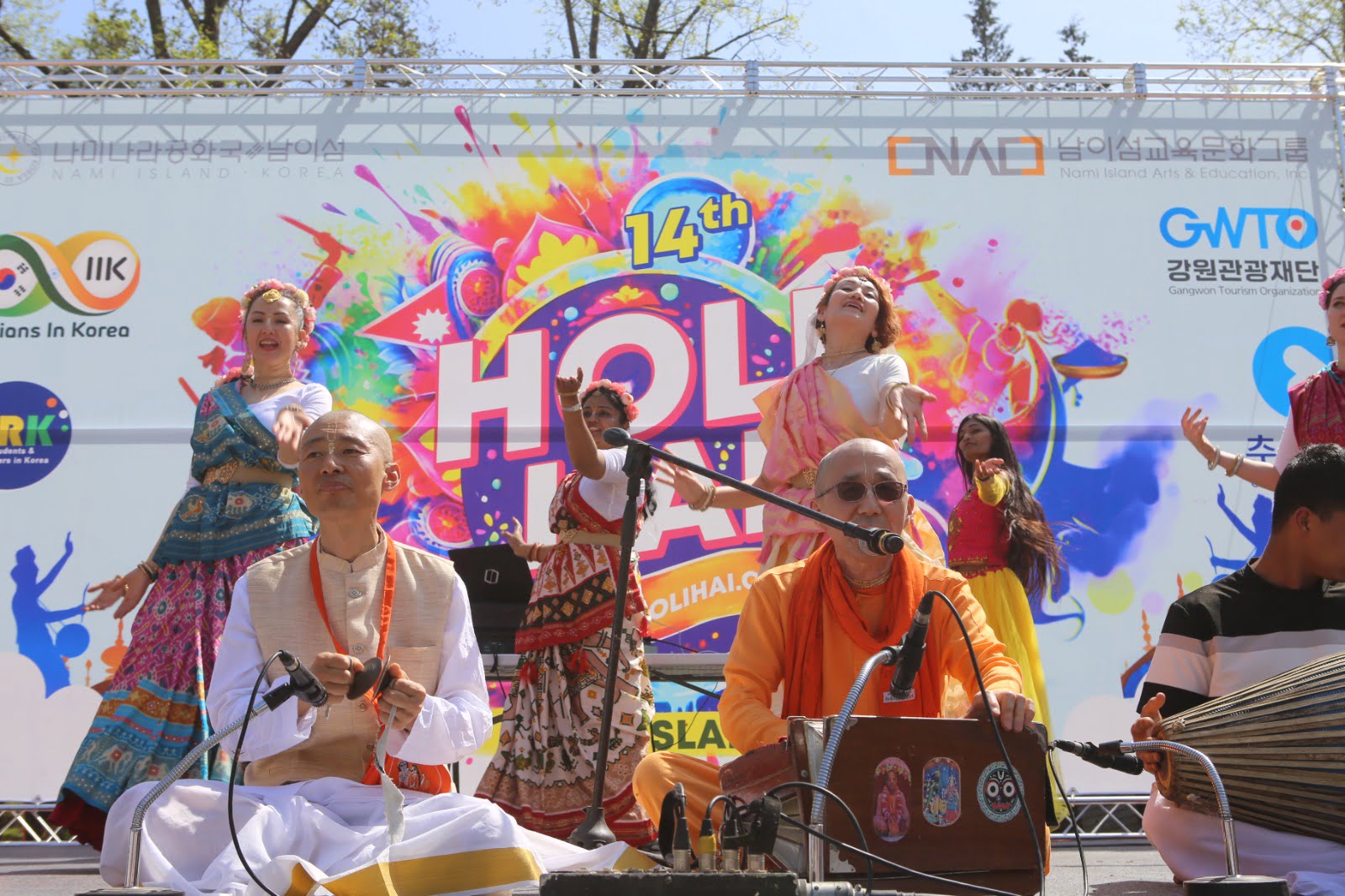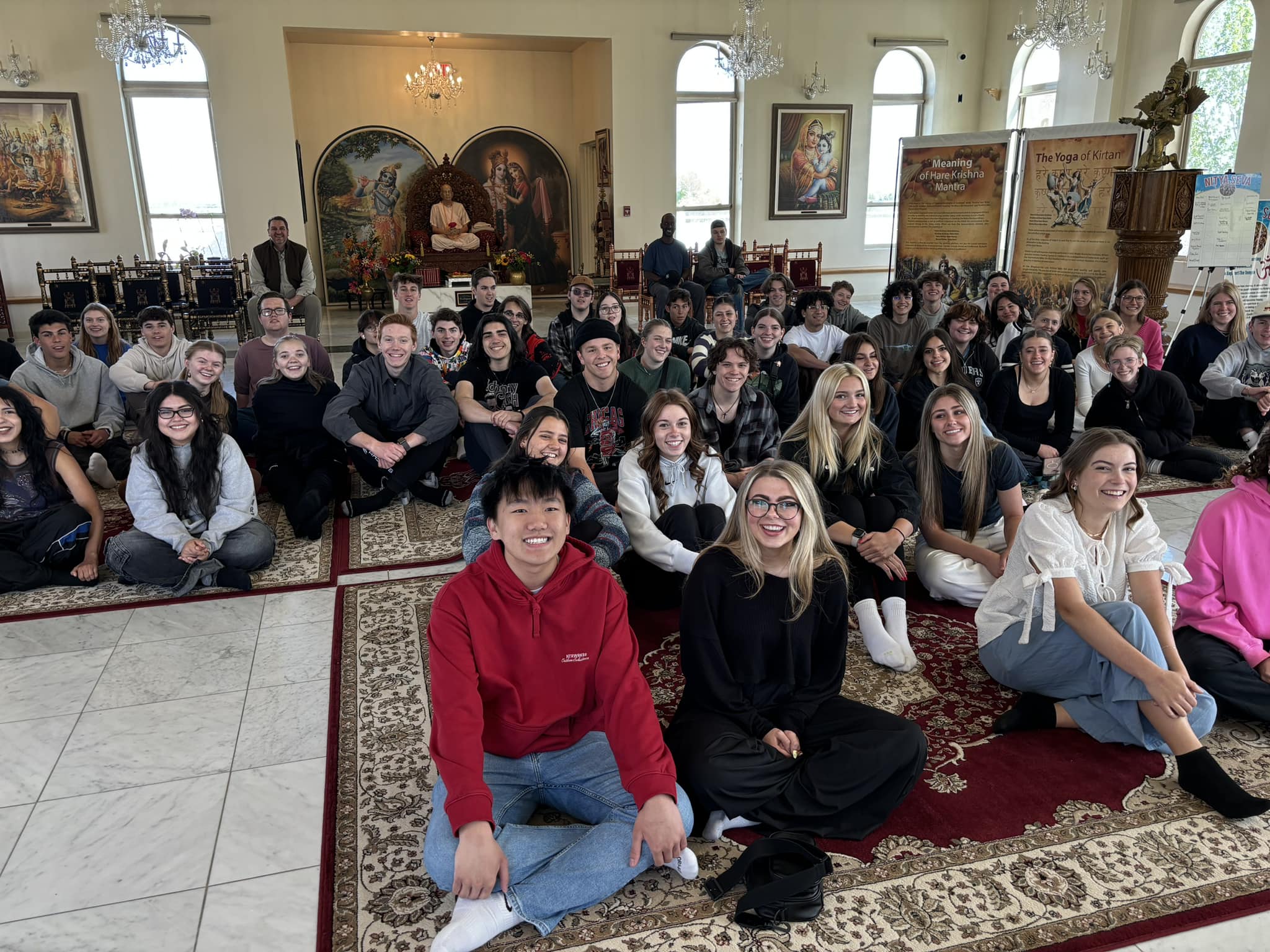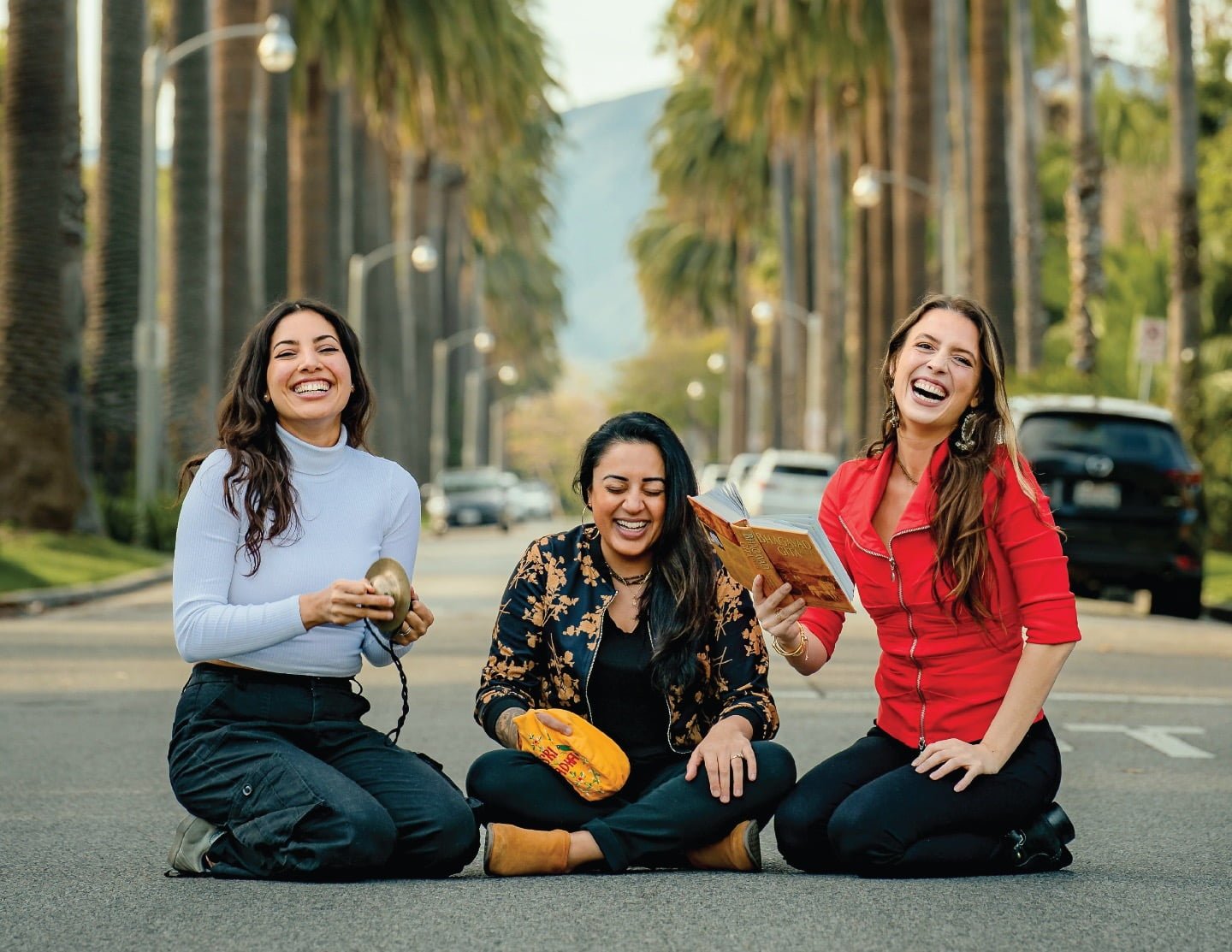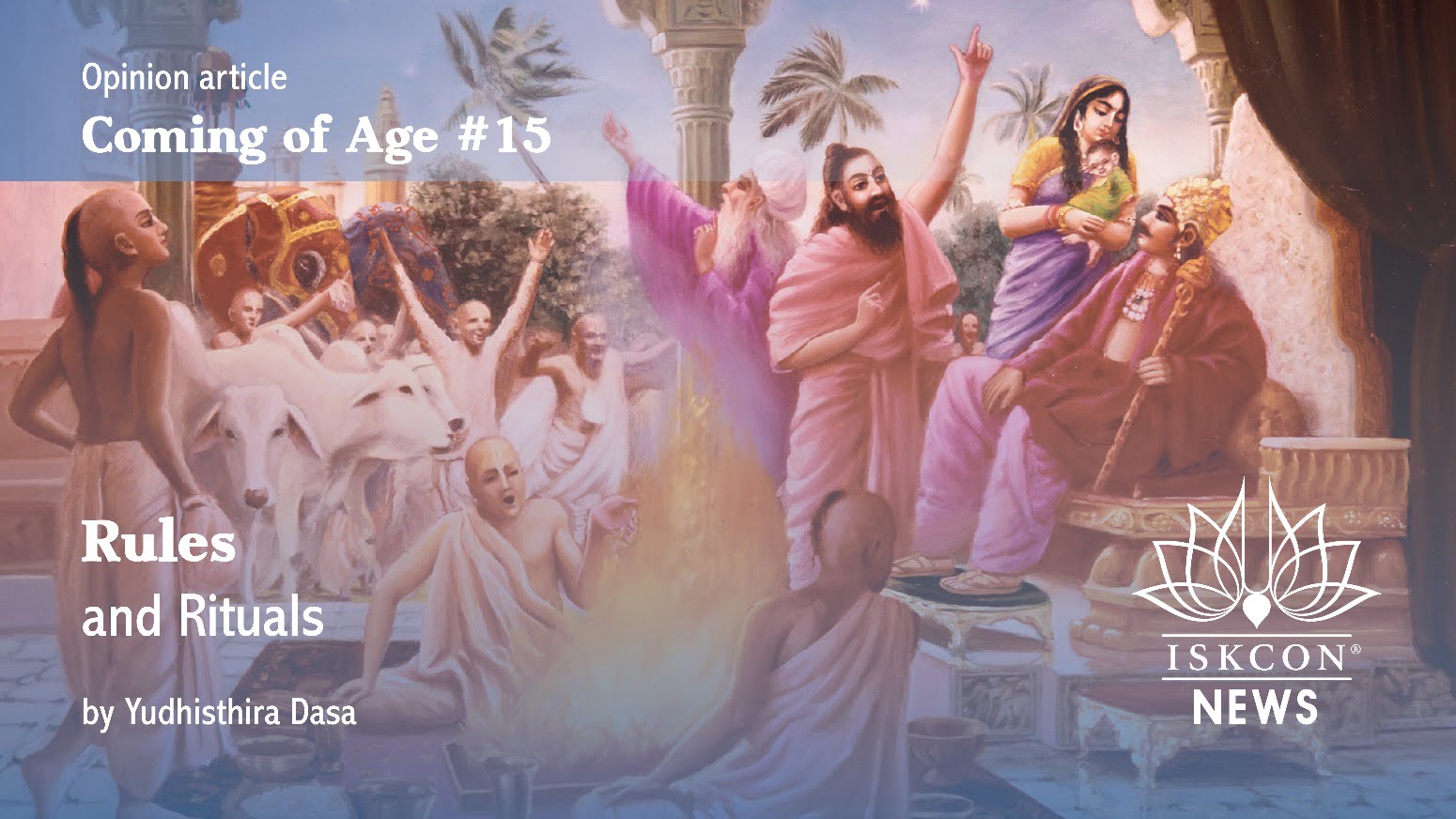An Explosion of Color: Hare Krishna Festivals at ISKCON Utah
By Madhava Smullen | Apr 18, 2009
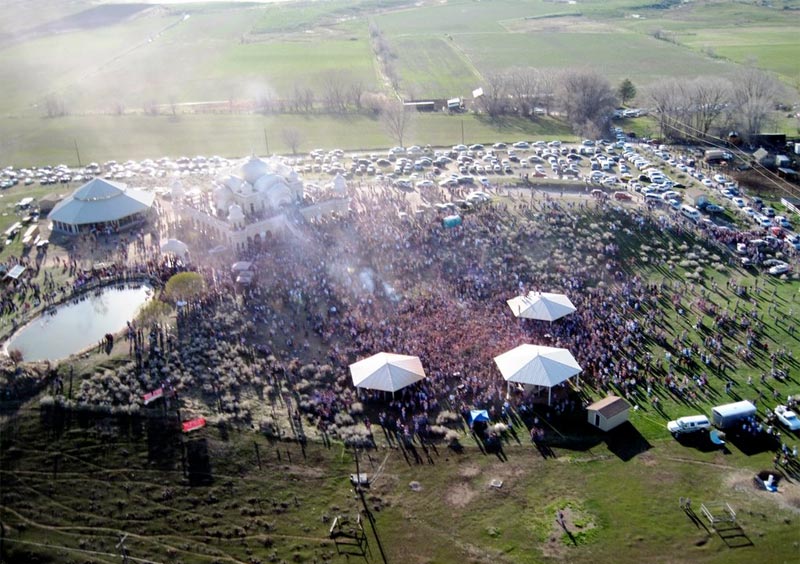
How do you put on one of the biggest Hare Krishna festivals in the world?
For Charu Dasa, president at ISKCON Utah, Spanish Fork, it was almost an accident. Twelve years ago, he opened the temple doors for the public to join them in celebrating Holi, the festival of colors. Commemorating Krishna’s playful throwing of powdered and liquid colors at his consort Radha and her gopi friends, it is usually celebrated with gleeful abandon in India. But Charu was unsure about the Western reaction, and so he tread carefully at first, requesting visitors’ permission before smearing colors on them.
One day, however, as he was asking permission of a student from the local Brigham Young University, an Indian congregation member walked in, scooped colors out of Charu’s bowl, and plastered the student with them. “I was shocked and held my breath,” Charu recalls. “But both the student and the congregation member began laughing, and after a couple of beats, I joined them.”
That was it. Caution went out the window, and by 2007, the number of visitors for the late March festival had risen from 100 people to 3,000. Attendance took a giant leap to 10,000 in 2008, while this year an unprecedented 15,000 people flooded onto the temple grounds. Charu estimates next year’s draw could be 20,000.
“I think people love Holi so much because of the feeling of brotherhood it brings,” he explains. “With one swipe of color, you erase all gender, ethnic, and religious differences.”
It’s testament to Holi’s appeal that ISKCON Utah advertise it even less than their other festivals. “We usually use 800 11” x 17” color posters, a 30’ x 4’ banner over University Avenue, ads in local college papers and city entertainment listings, and plastic foam core signs on chain link fences by a busy road, where they are seen by up to 10,000 motorists a day,” Charu says. “But for Holi, we only do the posters and a few newspaper ads. The word of mouth is so good, it’s just like throwing a match into a dry field. For instance, a huge percentage of our visitors said they’d heard about Holi through a Facebook group set up by some local students.”
And it’s these American college students, rather than devotees or Indian congregation members, that make up 80% of the Holi crowd. The local Brigham Young University has even adopted the festival as its unofficial spring break. “I know that sounds like a recipe for trouble,” Charu says. “And if we tried this in New York or Chicago, it would be. But Utah is a very pious place. People here are predominantly Mormon, and have an ethic of clean-living and respect for each other – I’ve never seen anyone at our festival smoke, drink, or indulge in any other disrespectful behavior. And if someone did, they would not be appreciated by the rest of the crowd.”
Of course, clean-living or not, 15,000 students is a handful. To make sure there’s no trouble or breaking of temple grounds rules, Charu employs six “monstrously muscled” security guards. But with his effective crowd control strategy, they’re rarely needed. “With a crowd that size, you have to be prepared to take all the energy and adrenaline that comes during the few minutes of color throwing, and channel it in a constructive way,” he says. “So we have a mantra rock band complete with lead guitars, bass guitar, keyboards, harmonica, and drums. That keeps the kids occupied dancing, chanting, body surfing and riding on each other’s shoulders.”
Charu seems to manage the cost of such a large event just as effortlessly as he keeps the crowd safe. People pay for their own food, handing over $6 each for the 1,500 gourmet feast plates. It’s less than half the price they’d pay for the same dishes at an Indian restaurant, but it easily covers the cost of ingredients. What’s more, after tucking into the delicious sak paneer, mattar paneer, papadams, pineapple halava and Bengali mixed rice with vegetables and cashews, many purchased cook books to try the recipes out for themselves.
Other costs, such as advertising and paying performers, are covered by the $1 – $2 per bag guests spend on powdered color to throw at each other – 12,000 bags imported from India and 12,500 bags manufactured by temple devotees themselves.
At the end of the festival comes what you would think would be the biggest task of all – cleaning up after 15,000 people. But Charu simply waits until things wind down and there are only two to three thousand left, then announces: “Some critics say that by coming here, throwing colors and dancing, you’re disrespecting the temple. Let’s prove them wrong right now.” He then sets his stopwatch. “I’m betting that every piece of trash can be picked up within the next 120 seconds.” Everyone gets to work, picking up thirty pieces of trash each, and before Charu’s stopwatch beeps, the festival site is clean.
You may be wondering what this whole event has to do with Krishna consciousness, and if you are you’re not alone. Some ISKCON members – the critics Charu is referring to – are suspicious of a festival that facilitates 15,000 students having a good time, and was never endorsed or celebrated by ISKCON Founder Srila Prabhupada.
But Charu is convinced that Prabhupada would highly approve of Utah’s Holi festival, and is sure that if the “critics” saw it for themselves, they would agree. Visitors eat food offered to God, watch a play about the Vaishnava poet Valmiki, and listen to Charu speak about Krishna consciousness in a palatable, entertaining way.
But most important of all is the major focus Holi’s history has on the power of chanting Krishna’s name. The demon Hiranyakashipu was trying to kill his devotee son Prahlada, the story goes, and requested his sister Holika – who had the power to resist being burned – to sit in the fire with Prahlada on her lap. But Prahlada simply chanted Krishna’s name, and was saved, while the demon burned instead. “I told the audience this, explaining that the Lord protects those who surrender to him and chant his names,” Charu says. “And in response, 15,000 people chanted Hare Krishna at the top of their lungs for three hours.”
Perhaps one of the most significant spiritual benefits of Utah’s Holi festival is that it makes the public realize that Krishna consciousness is fun. Srila Prabhupada famously said, “Singing, dancing, philosophy and prasadam. What is the objection?” And guests at Holi seem to agree. Many say the festival is the best time they’ve ever had in their life, while out-of-state students joke, “It’s the best time to be had in Utah.” What’s more, the huge media coverage of the event renders the temple famous and its devotees celebrities. When Charu’s dentist found out that he was the “minister” at the Hare Krishna temple, she got so excited that she called six other people over to grill him for the next ten minutes.
Prabhupada said people are supposed to love us, Charu points out, and if they don’t, then there are things we’re doing that we shouldn’t be doing, and things we’re not doing that we should be doing. “It’s always pained me when people sneer at devotees,” he says. “And that may be our own fault. But now it’s time to try to turn things around.”
Since Utah Valley is 88% Mormon, ISKCON’s main objective there is not to “make” new devotees, but simply to enrich people’s already spiritual lives. “Krishna consciousness is not about converting anyone,” Charu says. “But perhaps we can give extra information about God that makes a Mormon become a better Mormon.”
ISKCON Utah holds seven other major public festivals besides Holi throughout the year. Nothing comes close to Holi’s 15,000-strong attendance; but Festival of India draws four to five thousand, and the others, including Shiva Ratri, Diwali/Govardhana Puja, Himalayan Performing Arts Fest, and of course Krishna’s birthday Janmastami, are not too far behind.
Each has a hook to draw the general public. For Janmastami it’s Dahi Handi, when devotees make a human pyramid and climb it to break the Handi (pot), traditionally full of Dahi (yoghurt), a tradition related to Krishna’s ancient pastime. At Festival of India, it’s fireworks and folk dancing. At Diwali/Govardhana Puja, it’s burning the effigy of the demon Ravana and bringing cows into the temple room.
“At a certain point, regular visitors have seen most of our dances and plays,” Charu says. “That’s when they start to take notice of the continuous chanting which goes on in the temple room for six hours alongside every cultural program. After spending hours doing kirtan at every festival – the temple room is usually filled to the max with about 300 people – they often end up getting japa beads, then reading the Bhagavad-gita, and gradually get more and more interested in Krishna consciousness.”
With very few full-time devotees in the area, and a very small Indian community, Utah temple has to draw the general public just to survive. But Charu also believes that even with a large devotee and Indian community, temple leaders should be evoking the missionary spirit that Prabhupada encouraged and stepping out of their comfort zone. “Prabhupada’s mood was that we should always push ourselves,” he says. “Why shouldn’t we try to get everybody in our city to become Krishna conscious?”
He also advises those temples who wouldn’t have enough room at festivals for devotees, Indians, and the general public to hold separate services tailored towards non-believers and those who are just scoping the temple out – perhaps Saturday night or Sunday noon services.
For Charu, his wife, and the handful of devotees living full-time at ISKCON Utah, Spanish Fork, their minds are always thinking of new ways to increase and improve festivals, and their lives are a constant treadmill of maintaining and tweaking them. But Holi requires the most work – while most good festivals take three months to put together, Charu is already obliged to start working on next year’s Holi, even as he’s still washing off the color from this year’s.
“Traffic and parking is a major issue that we have to work on – this year the area was clogged for five miles in every direction,” he says. “People living ten miles away left for the festival at 4pm and simply never made it there. Locals spent an hour and a half just trying to get to the grocery store a few miles down the road. So next year we’ll rent two high school parking lots and one fairground to provide 1,000 new parking spaces. We’ll also charge a small fee for parking, and run shuttle buses to and from the festival area. This is absolutely critical for the festival to continue.”
The transcendental treadmill continues.
And in ISKCON Utah, the devotees prepare themselves for an even bigger, better Holi in 2010.





